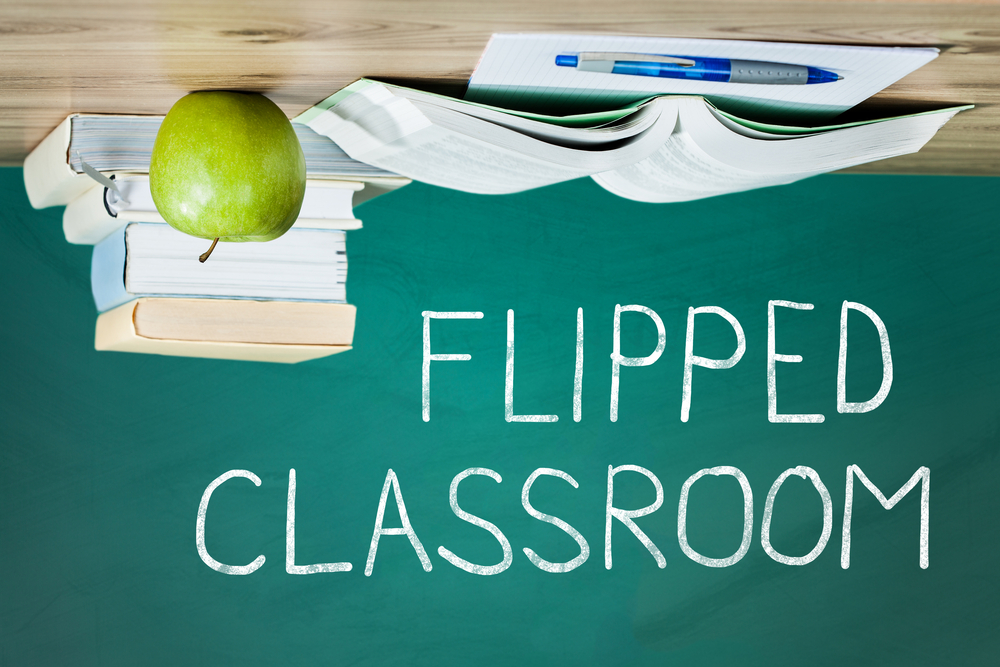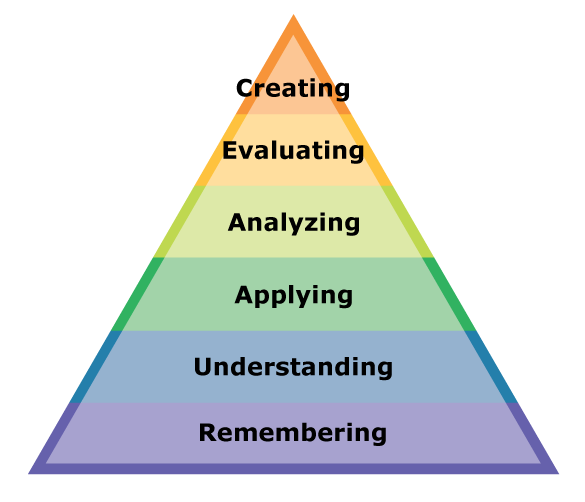 Kate Adams teaches ESL to university students at the Illinois Institute of Technology and works with immigrants through the Chinese Mutual Aid Society in Chicago, Illinois. She is the co-author of Trio Reading and Inside Writing. In this article she describes the process of transitioning to a Flipped Learning classroom and how it has benefited her lessons and her students.
Kate Adams teaches ESL to university students at the Illinois Institute of Technology and works with immigrants through the Chinese Mutual Aid Society in Chicago, Illinois. She is the co-author of Trio Reading and Inside Writing. In this article she describes the process of transitioning to a Flipped Learning classroom and how it has benefited her lessons and her students.
Flipped learning
When the university where I teach recently switched to a flipped learning model, I was nervous. I’d had confidence in my lessons which revolved around the narrative of my presentation interspersed with activities to practice skills, but now I would have to adapt them to an entirely new approach. How would flipped teaching and learning affect my classes? I’d like to share some of the insights and tips I gained from making the switch.
What is flipped learning?
Our program’s new approach to flipped learning most closely matched that described by Cynthia Brame (2013) of the Center for Teaching at Vanderbilt University:
In essence, “flipping the classroom” means that students gain first exposure to new material outside of class, usually via reading or lecture videos, and then use class time to do the harder work of assimilating that knowledge, perhaps through problem-solving, discussion, or debates.
This doesn’t contradict the popular perception that the Flipped Classroom is one in which you are assigning videos to students to watch outside of class. Nor does it dictate that this is necessarily what you have to do. The fundamental idea is that students process new information at home on their own so that they can read, watch or listen at their own pace and repeat as needed. Then in class the focus won’t be on you, the teacher, explaining a new concept for the first time, but on working with students to deepen their understanding, correct misunderstandings, practice, and produce.
According to Brame, when we apply this model to Bloom’s Revised Taxonomy we can see that a flipped learning approach has students working on the lower levels of knowledge acquisition at home through autonomous understanding and retention of new material. This foundation prepares students to engage with new language and “do the harder work of assimilating that knowledge” at the higher levels with the teacher during class. In this way flipped learning enables teachers to focus on the areas where their guidance is most beneficial to students’ language acquisition.

What does flipped learning look like?
Different schools and different teachers will have their own unique approach to flipping the classroom. There is not one “right” way to go about it because learning outcomes and learners’ needs vary. The following is what my listening class looks like in our English Language Program since we have adopted a flipped learning approach:
- All materials are posted before each class. In addition to the learning materials, when I do have presentation slides, I post them for students to look through before class so that they’ve seen my questions and had time to contemplate the answers before the lesson. I also post all audio for students to listen to and take notes on at home.
- Understanding is checked at the beginning. Class begins with a “bell ringer”—sometimes a quiz completed individually, sometimes a task with a partner, but always an activity based on the work done before class to check comprehension.
- The whole class uses a shared document. In my class we now use a shared Google Doc which acts as a constantly evolving focal point and allows instant production and collaboration from students and ongoing feedback from me. For example, in class on the Google doc I’ll have students list tips for listening to a lecture, complete a KWL chart on a lecture topic, talk with a partner and then summarize thoughts on the document, etc.
- Work is “product” oriented. Students are engaged in activities, but they are now producing something too. I’ll have students create a graphic organizer to match notes they took, use a rubric to assess another student’s notes, etc. As they work, I am able to quickly evaluate learning/understanding. Products hold students accountable.
Why flip the classroom?
Transitioning to a flipped learning approach has changed my classes for the better in many observable and measurable ways. A few of the most significant are:
- Students talk more and present more. A lot more! I still present, but it’s now always targeted and based on students’ work.
- I see more student work and give more feedback. Because we use a shared Google Doc, I now have more written examples of students’ language use. I can give instant feedback and I gain more insight into students’ thought processes and progress.
- Students demonstrate more understanding. I see this in the quality of what they produce during class and in their increased output.
- Students do the work. In fact, I find that my students participate even more now. Quizzes, group work and partner activities in class motivate them to do the pre-work before class.
How to make the flip
So are you interested in making the flip? How can you start using flipped learning in your classroom? Here are a few tips to get you started:
- Identify clear focus points for pre-class work. Expose students to the content at home and supply them with a targeted activity to check for understanding, which they then bring to class.
- Be consistent. Explain the routine to students and stick to it. Always have a pre-class assignment for the new content you’ll be focusing on.
- Mix it up. Flipped learning isn’t just about videos. Provide students with different ways to engage with new language and concepts before class. For example, if you are working on reading skills, you can have them not only read a passage before class, but also take notes on it, compare it to a related passage, research the topic and fill out a KWL chart, or work with key vocabulary to build background before class.
- Ensure accountability. Begin each class with an activity based on students’ pre-class work. I suggest grading the pre-class activities, especially in the beginning of the semester to establish the routine. Quizzes based on the pre-class learning are also a good option as research shows that students retain information better when they take frequent quizzes (Carey, 2013). And you don’t have to just make it an individual assignment— for example, I have students complete a quiz and then debate the answers with a partner. Whatever your approach, make sure to stress to students this is for the benefit of both them and you because it makes it possible for you to identify and address any misunderstandings in class.
- Integrate technology: I use Google docs, Blackboard (a Learning Management System), and Voice Thread in my classes. Blackboard is great for not only hosting learning materials, but also for having students check understanding by taking quizzes and submitting questions before class. Voice Thread allows collaborative voice recording so you can have class discussions outside of class. I’m sure there are many more ways and platforms that can be used to enhance your Flipped Learning classroom so don’t hesitate to explore and experiment to keep your lessons ever-evolving and relevant.
Is making the flip worth it?
I made the flip and I think my teaching is better for it. And my students? I won’t get evaluations until later this summer, but I recently ran into a student who said, “Excellent. Everything excellent.” He told me he’d been studying English for ten years and hadn’t thought he needed the class, but that it had really, really helped him. If his review is anything to go by, flipping my classroom has been worthwhile for my students as well.
Are you interested in trying the Flipped Classroom approach to teach reading skills? Find out more about Trio Reading and get a free sample chapter, overview, and see the complete syllabus.
Interested in hearing more from Kate about Flipped Classrooms? Join her at the International Convention of the American Council on the Teaching of Foreign Languages for a talk and discussion on “Strategies, Activities, and Reflections on Flipping a Language Classroom” this November.
References
Brame, C., (2013). Flipping the classroom. Vanderbilt University Center for Teaching. Retrieved April 10, 2017 from https://cft.vanderbilt.edu/guides-sub-pages/flipping-the-classroom/
Carey, B. (2013, November 30). Frequent tests can enhance college learning, study finds. The New York Times. Retrieved from https://www.nytimes.com


Reblogged this on ELT by M Amin Gental.
I think a flipped classroom is a new educational approach, which should be implemented into a new global education system. The idea should be developped and learnt by relevant educators to have positive challenge and change.
I am doing this in my own classroom. I am one of only a few in my district to try it. I get resistance from students and parents surprisingly enough. But I also get those who thank me for it in the end.
I’d be really interested to hear from any flipped classroom practitioners what they do in the case of students who DON’T do much (or any!) of the pre-class work. And what about those students who struggle or aren’t self-motivated enough to do it well – how are they supported before being faced with the more challenging, higher-order stuff in the classroom?
[…] in web tools and apps, technology-based methodologies, such as blended learning, hybrid learning, the flipped classroom and MOOCs, have attracted more interest among educators as they create learning environments which […]
[…] image via oupeltglobalblog.com […]